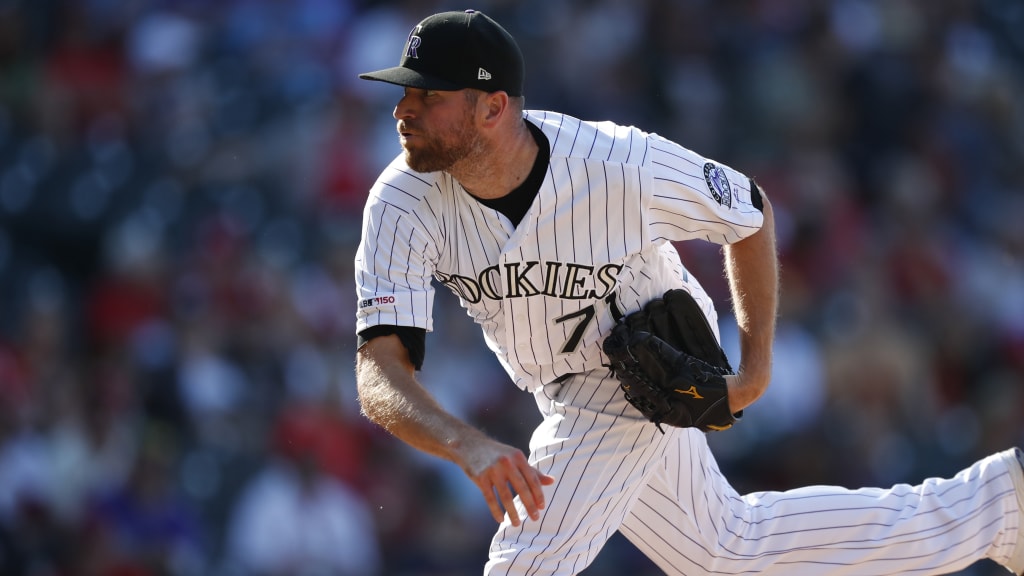
SCOTTSDALE, Ariz. -- A few days ago, Rockies manager Bud Black discussed reliable closers he has shared a clubhouse with, as a teammate, coach or manager.
And Wade Davis.
“The teams I’ve been on have been pretty lucky to have the quality,” Black said. “But I do know, talking to other managers, other pitching coaches, when it’s floating and you’re trying different guys, it can be difficult. It’s not as easy as you think.”
Which is why there is no competition for the Rockies’ closer role in 2020.
After leading the National League with a club-record 43 saves in 2018, Davis saw last year fall apart. A midseason oblique issue accelerated a spiral to an 8.65 ERA and the loss of his job. But while Scott Oberg took the job in August and Jairo Díaz held it at the end of the season, after Oberg had surgery for blood clots in his right arm, trust in Davis remains.
“We have a guy who’s done it for a long period of time,” Black said. “He is successful. Our thought is that we’d like for Wade to be our guy.”
If Davis, who will make his 2020 Cactus League debut Sunday against the Angels at Salt River Fields at Talking Stick -- is pitching well, the bullpen is instantly better than last year’s NL-worst 5.17 ERA. Oberg slides back to primary setup and a group of growing relievers fall naturally into earlier roles. But if Davis is not secure in the ninth, it’s not like the Rockies would use him in the seventh or eighth with a lead.
Confidence that leads are safe begins with Davis.
Davis, in the final year of a three-year, $52 million contract, doesn’t attach a mental burden to his struggles last year. Instead, he is concentrating on what he loves about baseball: taking the steps toward strong performance.
For a turnaround, Davis must arrest problems that have crept into his four-seam fastball and his cutter.
Before last season, the highest average against his four-seamer, as a reliever, was .233 in 2016. But the average went from .196 in 2018, his first year with the Rockies, to .282.
The cutter saw a similar outage: Hitters had never managed better than .200 against him when he used it in relief, and the success rate went from .197 in 2018 to .262 last season.
Davis said the problem with the pitches was unplanned and unwanted horizontal break on his cutter – and he isn’t blaming Coors Field, since the patterns began during his last year with the Royals, 2016.
Add that to a decline in fastball location -- bottom 26 percent in 2018 and bottom 37 percent in 2019 -- and you have problems that are connected.
So in early Spring Training, and maybe throughout, the cutter is staying in Davis’ pocket while he throws mostly fastballs and changeups, in an effort to keep his fingers from drifting to the side of the baseball to create that unwanted cutting.
“To throw the fastball and changeup you’ve got to be behind it -- that’s been my mindset,” Davis said. “I haven’t thrown a cutter yet. I might not throw one until Opening Day. The better your fastball is, the better your cutter will be.”
The detail with which Davis is making corrections serves as a window into what makes him effective. Rather than worry about stats or the emotions of the booing fans and losing his job last year, he is relishing this year’s buildup to what he hopes is a turnaround.
“I’m just enjoying the process of what I’m doing right now,” Davis said.

